More to Discover
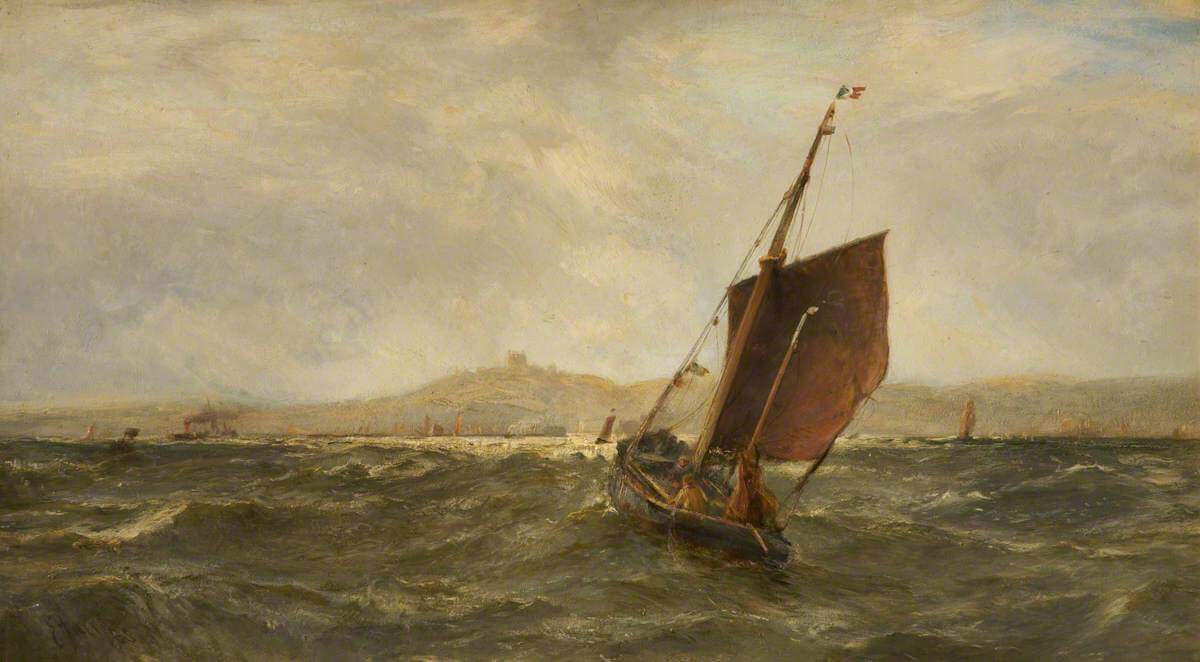
Throughout history artists have flocked to the sea for inspiration. The beauties and dangers of life near the water have been well documented by painters and poets. But what is it about water that captures our interest so consistently? Explore this exhibition to find out more about humanity’s complicated relationship with water, as a provider or playmate, muse or murderer.
All the artwork in this exhibition is from Salford Museum and Art Gallery’s collections, and can be viewed on ArtUk.
All living things need water to survive. Like animals gathering around a watering hole in a nature documentary, early civilizations would have been built near water, allowing them to drink easily. Quickly hunters learned to fish, getting food as well as drink from the water. Cave paintings show that fishing was common as early as 40,000 years ago!
The water provides work for millions of people every year, catching fish or transporting cargo. Before the invention of trains or planes, boats were the fastest method of transportation, and the invention of steam engines during the Industrial Revolution (1760-1840) allowed boats to travel further and faster than ever before.
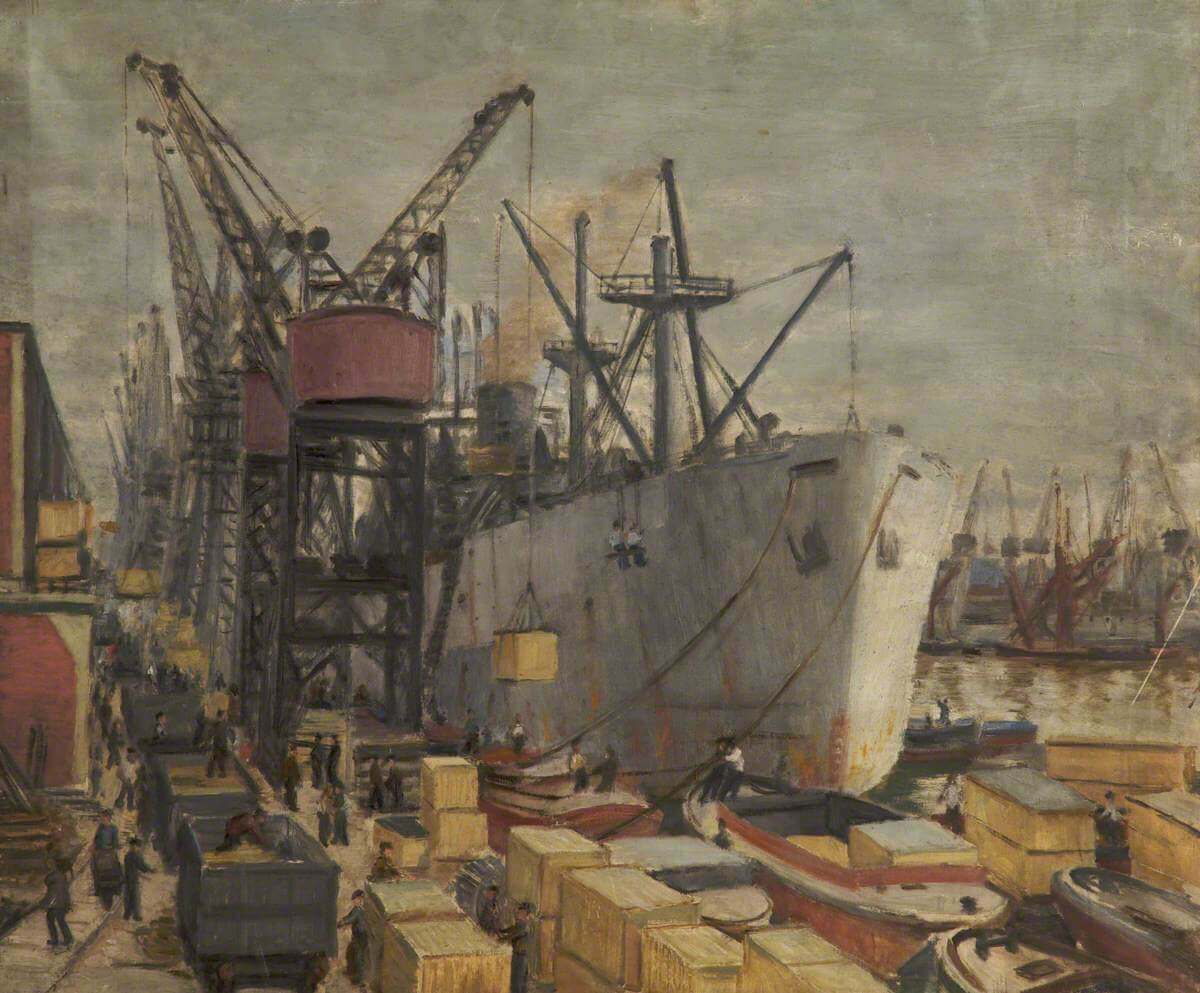
Bernard Hailstone (1910-1987)
Oil on canvas
Bernard Hailstone was a British artist who became an Official War Artist in 1941. He worked as part of the Ministry of Transport during World War 2. During the war, bad weather conditions over the Atlantic sea made it too dangerous for aircrafts to be flown between North America and Britain, so planes would be taken apart and shipped across the sea in crates.
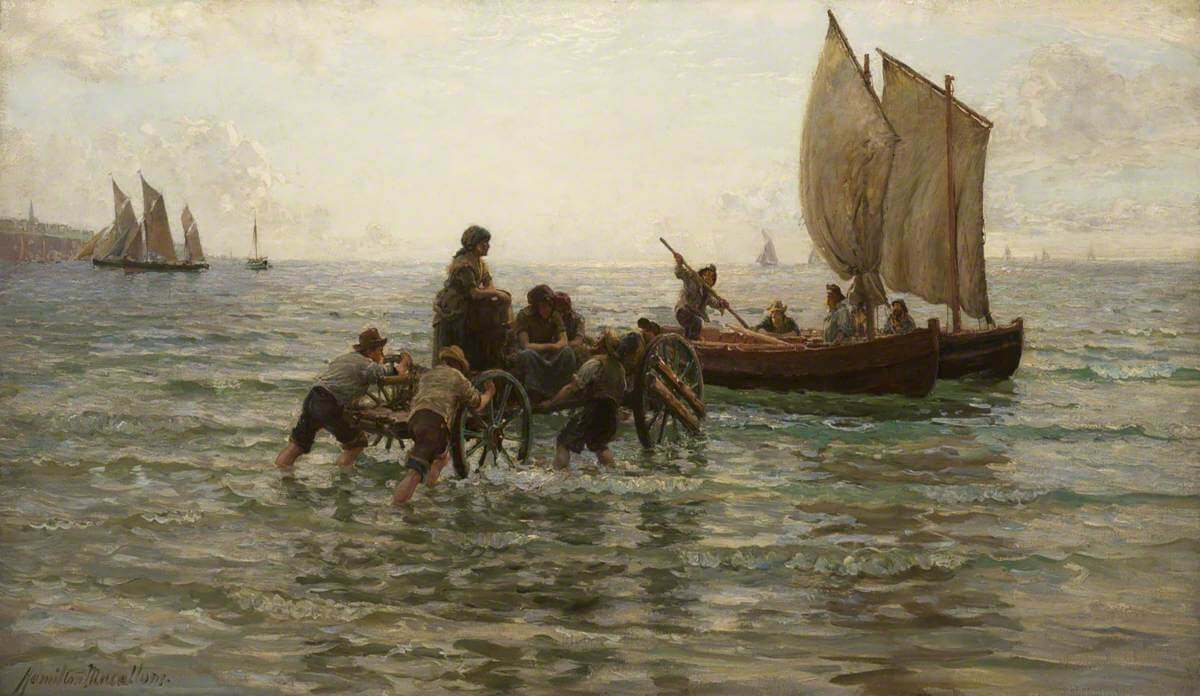
John Thomas Hamilton Macallum (1841-1896)
Oil on canvas
John Thomas Hamilton Macallum is a Scottish artist, known for his depictions of the sea and the lives of fishermen. In this painting, a group of Lance Fishers have returned home after a long day of catching fish. They are greeted in the shallow water by men pushing a cart, ready to carry their haul back to shore.
Life onboard ships could be very dangerous, and sailors on long journeys were at constant risk of being shipwrecked. Huge storms at sea could turn boats upside down, cause them to crash, or set them on fire, claiming hundreds of lives in seconds.
Artists feared and respected the water, and the Romantic Sublime was a genre that depicted the frightening greatness of nature. Artists depicted vast seascapes and overwhelming storms, representing nature as something both awe inspiring and awful, exploring the danger of humanity’s desire to be at sea.
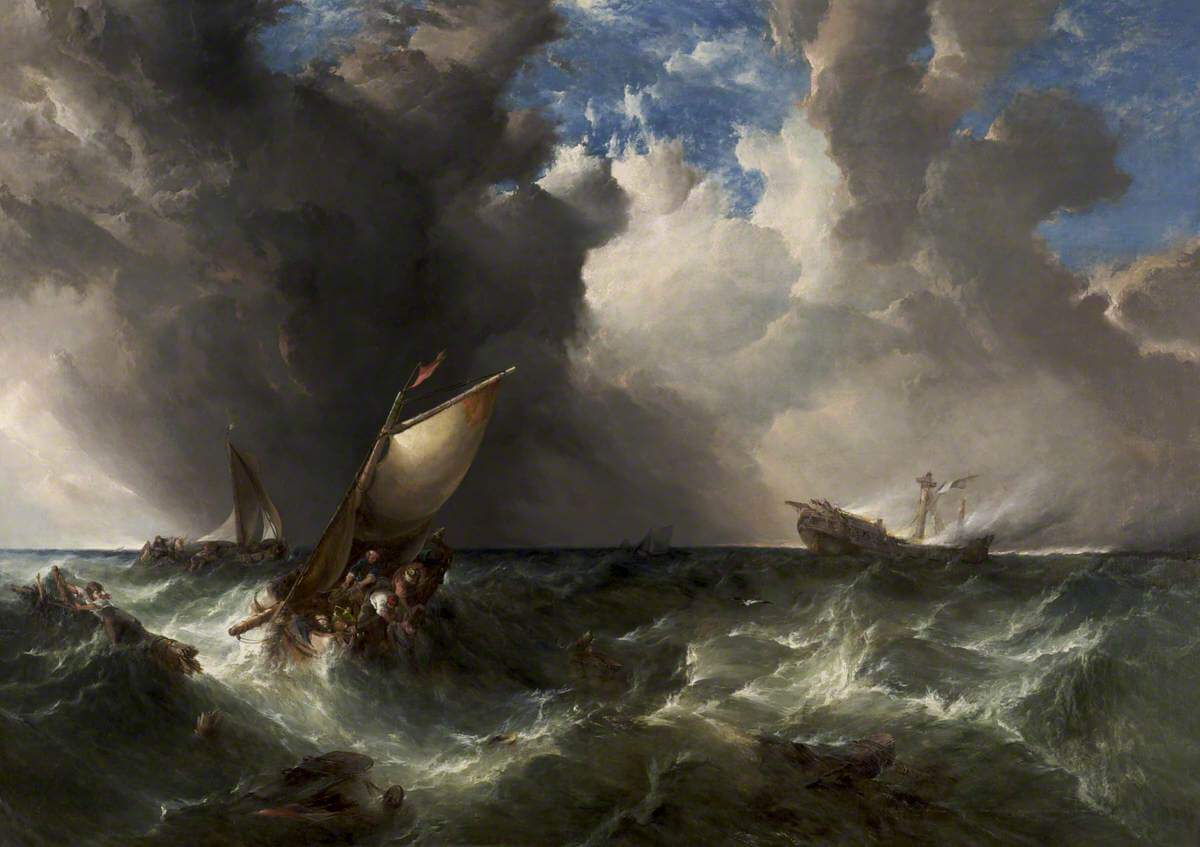
Alfred Montague (1832-1883)
Oil on canvas
Fire was one of the greatest dangers to wooden ships which were often laden with highly combustible cargoes. The ship portrayed here has been devastated by fire and is a total loss. The crew has abandoned ship, making the perilous journey to shore in small lifeboats. Some unlucky crew members cling to the wreckage, awaiting rescue.
This painting is available to view in our Victorian Gallery.
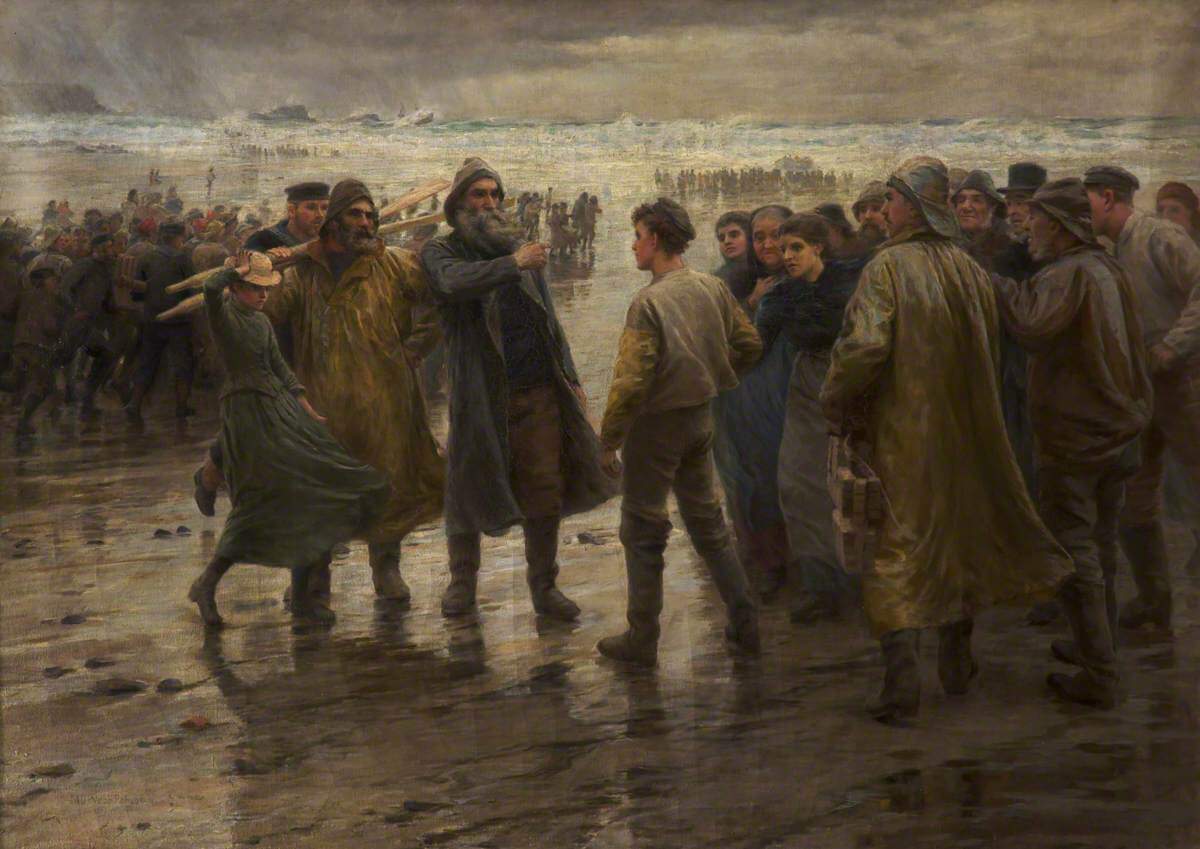
Maria Dorothea Robinson (1850-1920)
Oil on Canvas
By the middle of the nineteenth century a lifeboat service was introduced to the Cornish coast. Like today, they were manned by volunteers. In this painting, a ship in distress lies close to the shore but in stormy seas. A young man has stepped forward to volunteer. Lives may be saved but many lifeboat men died in such dangerous rescues. The young man’s mother pleads with him not to go, scared for his life.
This painting is available to view in our Victorian Gallery.
Everyday life takes place near water, in the form of rivers, lakes, seas, and oceans. Water is so important to human lives that it is used as symbolism in poems and paintings all across the world, representing love, life, and death.
People rely on the water for both work and play. Water sports have been used for recreation throughout human history. Swimming and rowing were both sports in the first Olympic Games in Athens, 1896.
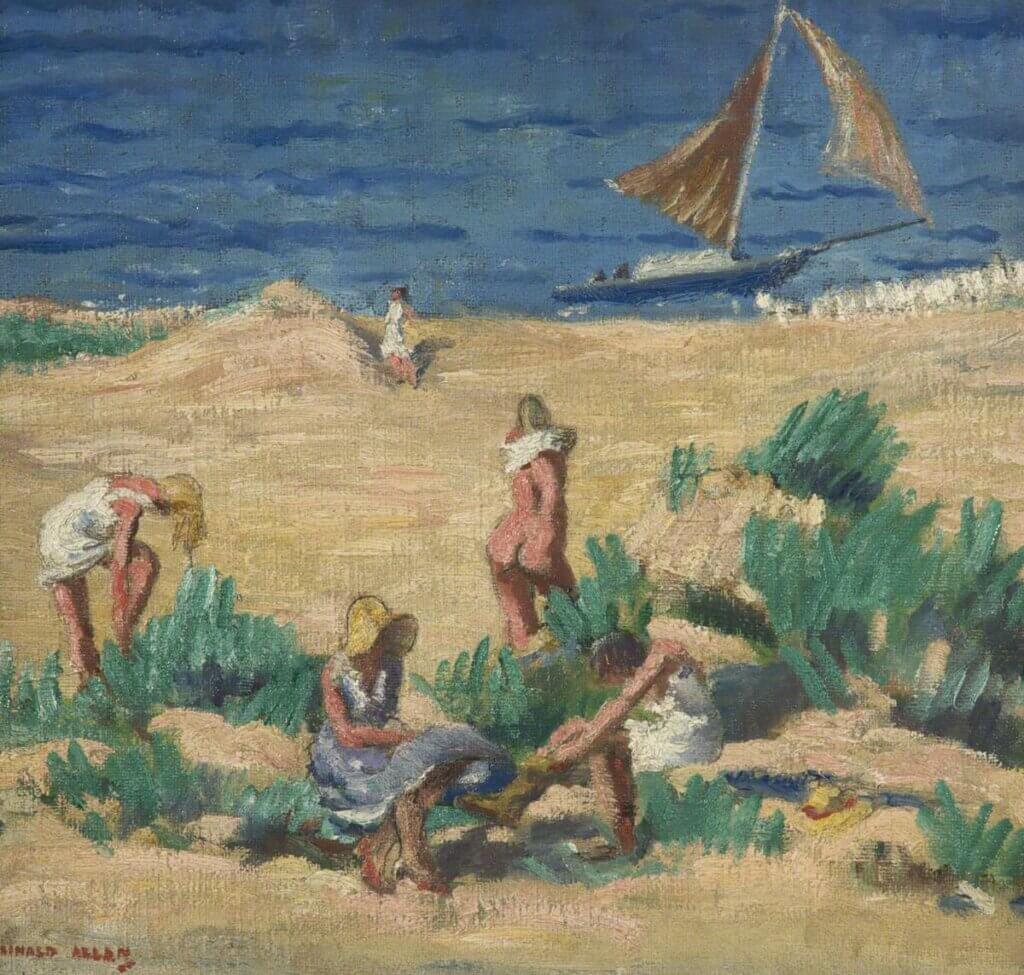
Ronald Allan (1900 – 1966)
Oil on canvas
In the 17th and 18th centuries, beaches became popular holiday destinations. Visits to the seaside were medically prescribed by doctors to expose patients to the fresh sea air, giving their lungs a break from the smog and dirt of their busy cities. People still flock to the beach during the summer holidays to play in the sand and splash in the sea. In this painting, a group of ladies pull off their stockings and sunhats, preparing to run into the cool ocean on a hot summer’s day.

Edward Henry Fahey (1844 – 1907)
1877
Oil on canvas
This scene of gentle lovers in a peaceful landscape is set in Albury Park, Surrey, the seat of the Duke of Northumberland. It is a companion to the painting ‘He Never Came’, which is in a private collection. The title could refer to the pond or to human nature, where a calm exterior can conceal a greater depth of emotion.
This painting is available to view in our Victorian Gallery.
For a long time, landscape painting was considered a lower artform in Western cultures, requiring less skill than portrait or history painting. Landscape art gained popularity as a way to appreciate nature during the Romantic era (c1798-1837), partially as a response to the Industrial Revolution and the lack of green spaces in big cities.
Beauty is subjective and many people disagree about what can be considered beautiful in life and in art. Depictions of water, both resting and wild, were considered beautiful by Romantic artists because of the strong emotional response they elicited. Do we still find paintings of water beautiful today?
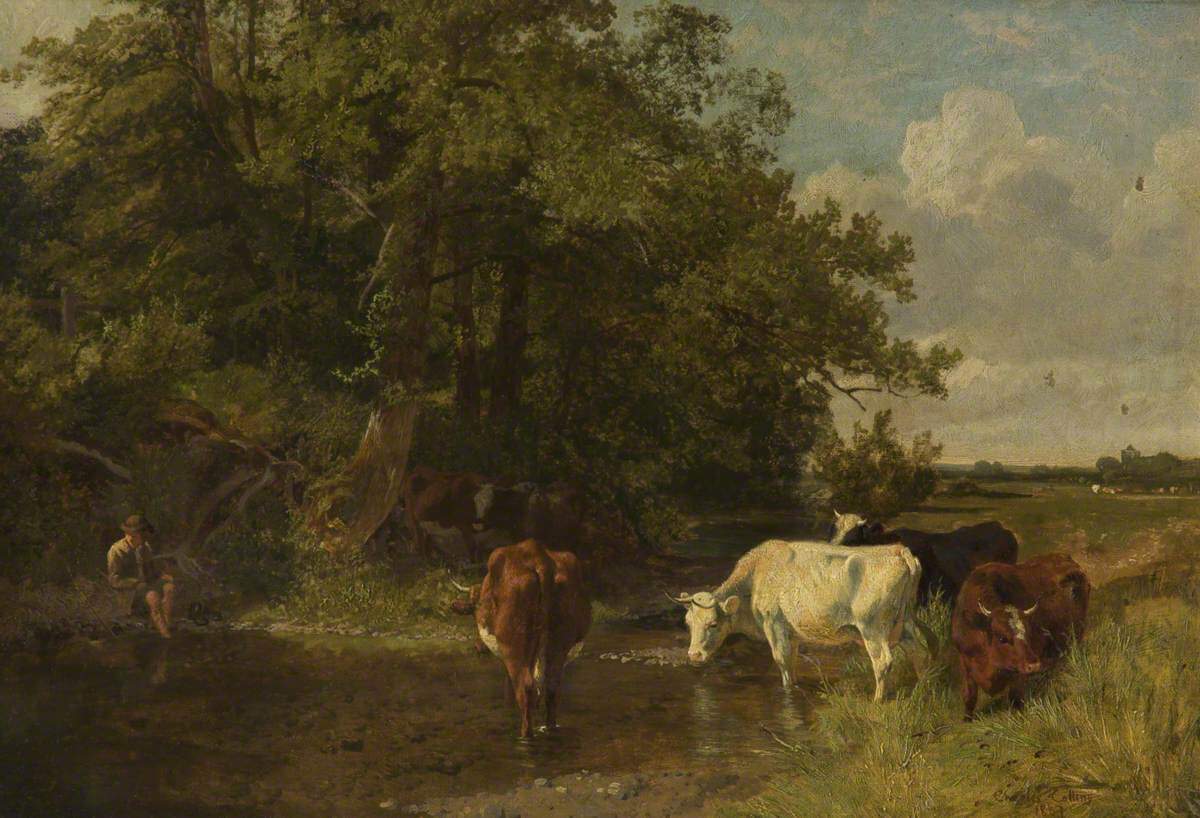
Charles Collins II (1851-1921)
1887
Oil on canvas
In this painting a farmer sits by a river and watches his cows drink. During the Industrial Revolution, it became popular to portray life in the countryside as something idyllic. People in the dirty, industrial cities, longed for life in the beautiful countryside. In reality, the work of farmers and poor people in rural areas was very difficult, dangerous, and messy, not at all how it seems in historical paintings.
This painting is available to view in our Victorian Gallery.
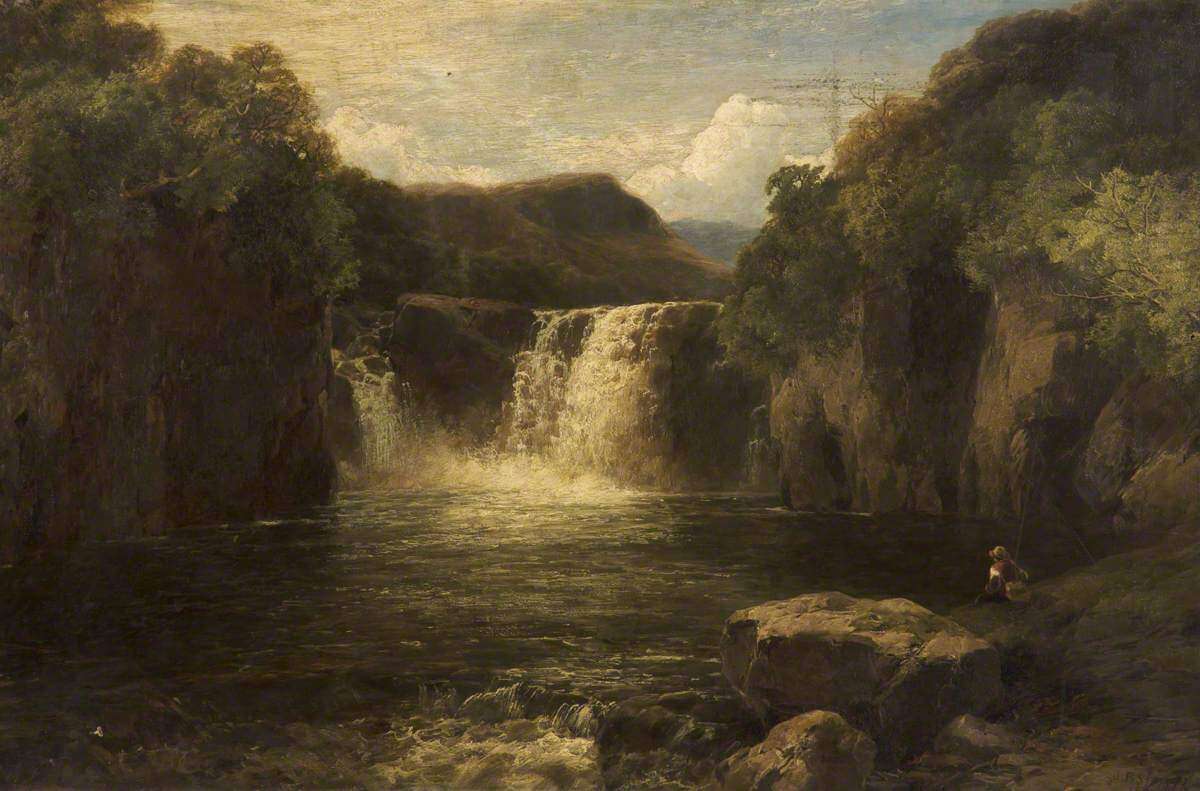
James Burrell Smith (1822-1897)
1890
Oil on canvas
Smith was a British artist, known for his landscape paintings. In this painting, a man sits on a rock, looking out across a river towards a waterfall. Smith captures the awe-inspiring scale of nature in this painting, portraying humanity as something insignificant in the face of the great waterfall and towering cliffsides.
Despite being landlocked, Greater Manchester is home to many beautiful, watery scenes because the rivers Mersey, Irwell, and Tame run through it. These rivers allowed Manchester’s large cotton and textile trade to be traded on a global scale, using boats to transport its goods far and wide. Manchester’s Bridgewater canal, built in 1761, is considered the first major canal in England!
Before photography was invented, paintings were used to document the world. Historical paintings of Salford and Greater Manchester can show us how our local area has changed over time. Look at these paintings showing scenes from Greater Manchester, do you recognise any of these places? Do they look the same today?
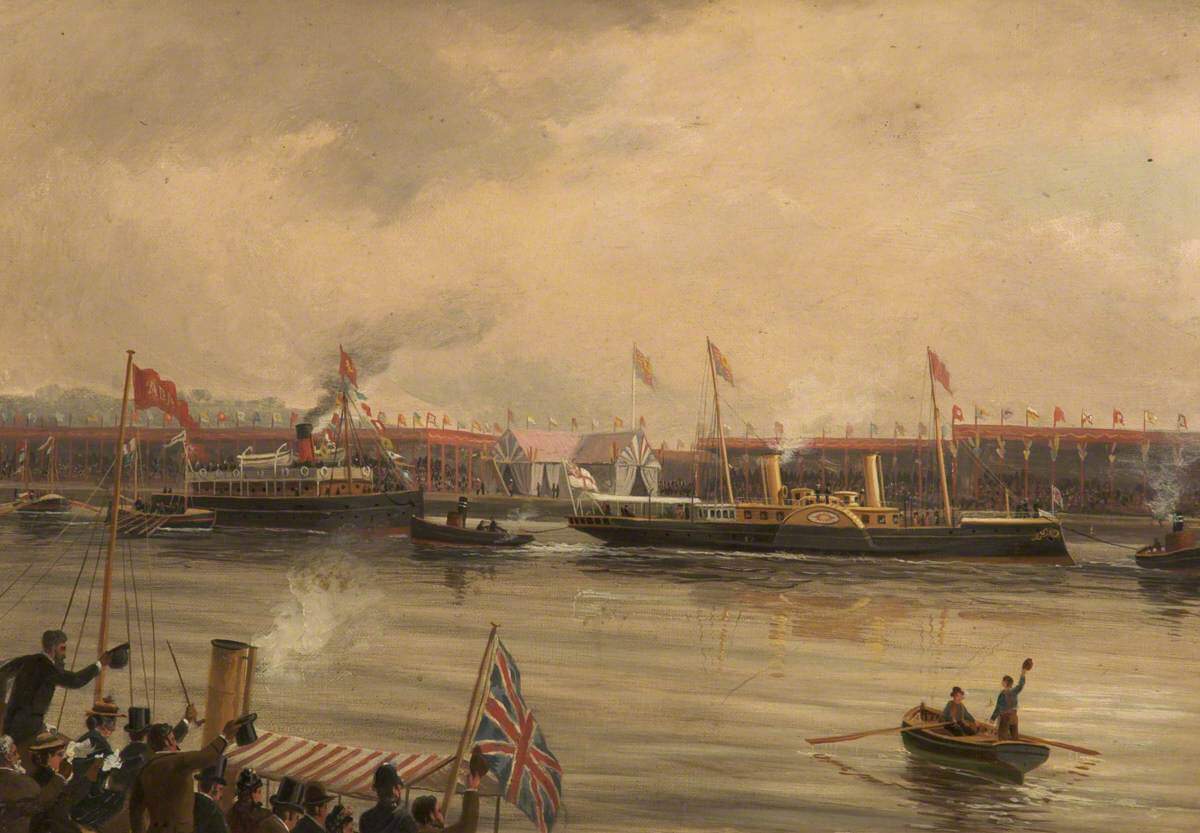
Albert Dunington (1860-1941)
1894
Oil on board
On the 21st of May 1894, Queen Victoria opened the Manchester Ship Canal. The canal was made to create jobs for the local people, allowing them to buy and sell goods across a longer distance. This painting depicts the crowds gathered to watch the opening ceremony. People stand in the stands and cheer as the Queen’s boat sails by.
This painting is available to view in our Victorian Gallery.

Thomas Pawson (active 1812-1825)
1825
Oil on canvas
Salford Museum and Art Gallery’s building was originally a mansion house called Lark Hill Place, built in the 18th or 19th century by a man named James Ackers. This painting shows Lark Hill Place as it was before it became a museum. Does it look familiar to you?
This painting is available to view in our Victorian Gallery.
Sign up to the Salford Community Leisure mailing list and be the first to find out about our latest news, offers and forthcoming events across our services.